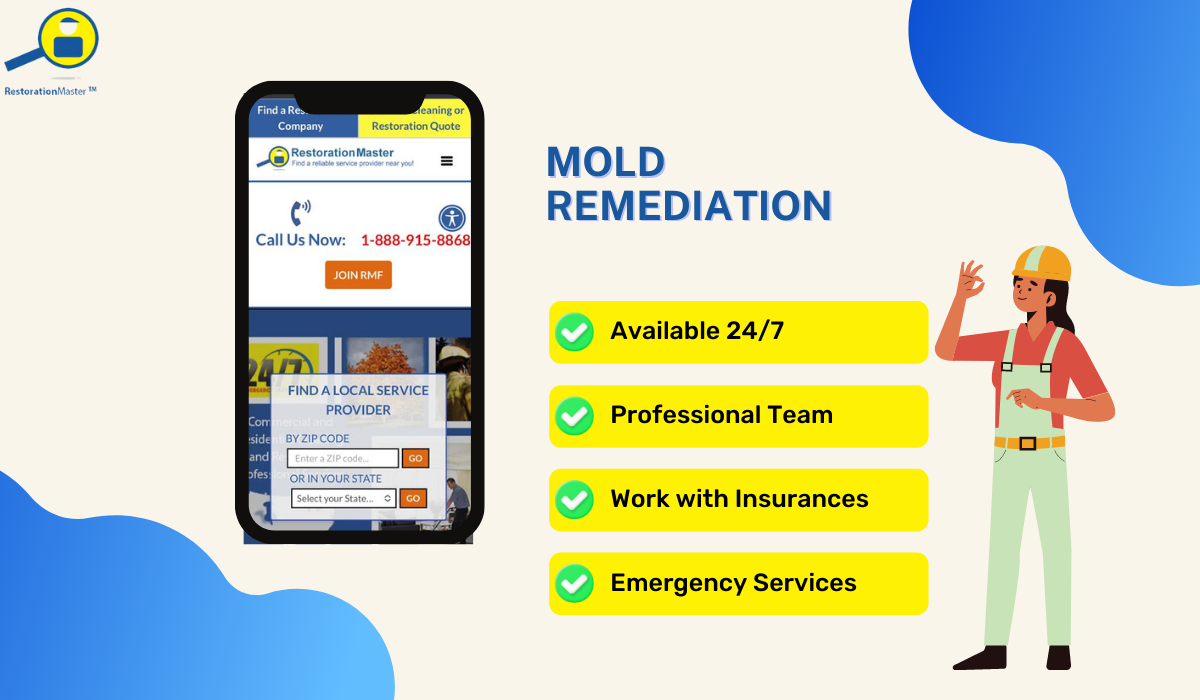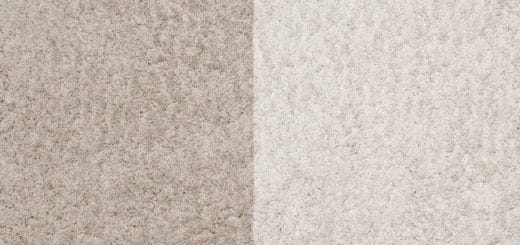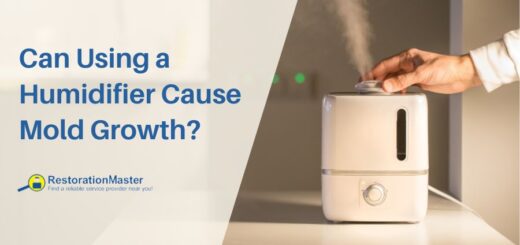How to Prevent Mold Growth in your Kitchen
The kitchen is one of the most susceptible areas of the house to moldMold is a type of fungus that grows in damp or humid conditi... More growth and it is very easy for moldMold is a type of fungus that grows in damp or humid conditi... More to occur there if preventative actions are not taken. It is important to keep kitchens moldMold is a type of fungus that grows in damp or humid conditi... More free because this is the same space in which food is prepared and consuming moldMold is a type of fungus that grows in damp or humid conditi... More can be harmful. Preventing moldMold is a type of fungus that grows in damp or humid conditi... More from growing in your kitchen is quite simple and it only takes a few preventative actions to ensure that your kitchen is safe, otherwise, you may need a professional mold remediation service.

Your kitchen is the heart of your home. MoldMold is a type of fungus that grows in damp or humid conditi... More in the kitchen can be avoided by following proper measures.
Keep the Kitchen Dry
One way to prevent mold from growing in your kitchen is to make sure your kitchen is dry and free of standing water. A humid environment invites moldMold is a type of fungus that grows in damp or humid conditi... More growth and condensation. When water is present, it can be a breeding ground for moldMold is a type of fungus that grows in damp or humid conditi... More. As you do the dishes or clean up the kitchen, water can get into small spaces around the sink which increases the risk of moldMold is a type of fungus that grows in damp or humid conditi... More. It is important to dry the water from these hidden places as they are the most likely places for moldMold is a type of fungus that grows in damp or humid conditi... More to grow with or without the excess water. After you clean your kitchen, use a separate towel to dry the water from the counters, cracks, floor, and other areas that are wet.
Keep your kitchen Clean and Tidy
When proper cleaning is not performed, a dirty kitchen is an ideal place for mold to grow on any surface. In order to prevent this type of growth, it is critical that you thoroughly clean your kitchen every day and keep all surfaces dry at all times. Also, make sure that you are using the right type of cleaning products in order to reduce the risk of having chemicals penetrate your skin or be absorbed into your lungs.
Dishes
Wash your dishes after each meal. It may seem like a drag at first, but think about how much time you’ll save by doing this right away every time instead of having to do it all at once a week. If you want an extra cleaning boost, add some white vinegar in with your daily dishwashing routine. As a weak acid and powerful disinfectantA disinfectant is a chemical substance used to kill or inact... More, white vinegar can tackle both bacteria as well as molds.
Appliances
Clean your appliance thoroughly after use. Clear out any food that may have spilled around the area, wipe down any counters that were used, clean the drip tray and even remove removable parts like blades or paddles to properly sanitize them in boiling hot water bath.
Refrigerator
When cleaning your refrigerator, remember that mildewMildew is a type of fungus that grows on damp surfaces, typi... More is attracted to different types of sporesSpores are microscopic reproductive units of fungi or mold t... More found on food and leftovers, so make sure you wipe down any surfaces with a disinfectantA disinfectant is a chemical substance used to kill or inact... More before throwing out old food or leftovers. Rinse all containers thoroughly before putting them in the refrigerator, and keep items that can harbor any remaining moisture off the top of your refrigerator where it’s warm. Use a baking soda and water paste to scrub any tougher stains; wipe it off with a damp cloth afterward. If your fridge is not cooling enough, check the temperature settings and make sure all vents are clear.
Kitchen Sink

A dirty kitchen sink leads to moldMold is a type of fungus that grows in damp or humid conditi... More and mildewMildew is a type of fungus that grows on damp surfaces, typi... More growth that can be difficult to get rid of. Regularly cleaning the sink with vinegar ensures that any food that drops in there gets cleaned up before it has a chance to grow moldMold is a type of fungus that grows in damp or humid conditi... More.
Keep the kitchen clean and dry by wiping up spills as soon as they happen. Dispose of leftover food and empty containers in a timely manner.
Dirt and grime on the spongeA sponge is a porous material used to absorb liquids or clea... More and in the sink create a perfect environment for moldMold is a type of fungus that grows in damp or humid conditi... More to grow. It’s important to keep your kitchen sink free from moldMold is a type of fungus that grows in damp or humid conditi... More before it starts growing. This is especially true if your kitchen sink has a garbage disposal, as water can sit beneath it for long periods of time. Don’t let the water sit for more than 24 hours, because that’s when moldMold is a type of fungus that grows in damp or humid conditi... More can begin to form on any remaining food scraps in your sink. Cleaning regularly will help keep it away. If a sink backs up or the garbage disposal stops working, get it repaired immediately.
Cabinets
In addition to cleaning the fridge, you should also make sure to clean the kitchen cabinets and storage spaces. By cleaning them on a regular basis, you’ll make sure that there is no excess moisture. A wipe-down with bleach or vinegar will do the trick. You can wipe down the inside walls with Windex and a soft cloth, but don’t squirt cleaner directly on them: It will discolor the plastic and cause it to crack over time.
Inspections and Maintenance
MoldMold is a type of fungus that grows in damp or humid conditi... More growth in the kitchen is a common problem that can be prevented by periodic inspections and maintenanceMaintenance is the routine care, inspection, and repair of a... More. To prevent mold growth, check frequently for leaks in faucets, pipes, drains, gas lines, sink shutoff valves, and appliances such as refrigerators and dishwashers. Fixed leaks should be repaired immediately. Water-damaged materials such as porousPorous describes a material that contains small openings or ... More pottery or tiles should be removed.
Check to see if your house has a sump pumpA sump pump is a pump installed in a basement or crawlspace ... More as a part of your central heating and cooling system. If you have an attached garage, be sure to include a drainage system to collect and divert rainwater away from the main house.
Use mold-resistant paint
The kitchen has a higher level of moisture in it than most other rooms of the house and as a result, surfaces such as the wall may become moldy. If there is some moldMold is a type of fungus that grows in damp or humid conditi... More growth on the wall, make sure to remove it and keep an eye on that area as moldMold is a type of fungus that grows in damp or humid conditi... More is likely to grow back in the same spot if the humidityHumidity is the amount of moisture or water vapor present in... More rises again. One option for preventing mold growth on the walls is using moldMold is a type of fungus that grows in damp or humid conditi... More resistant paint which is water resistant and will prevent moldMold is a type of fungus that grows in damp or humid conditi... More from penetrating through the painted layer. Adding moldMold is a type of fungus that grows in damp or humid conditi... More resistant paint to your kitchen will also rejuvenate the look of the kitchen walls.
Check the kitchen’s ventilation
HumidityHumidity is the amount of moisture or water vapor present in... More is another common cause of moldMold is a type of fungus that grows in damp or humid conditi... More growth and limiting the humidityHumidity is the amount of moisture or water vapor present in... More within the kitchen will greatly decrease the risk. The best way to keep the humidityHumidity is the amount of moisture or water vapor present in... More down within the kitchen is by opening the windows and making sure there is always good ventilationVentilation is the process of exchanging or circulating air ... More. It is important to remember that excess moisture, standing water, or high humidityHumidity is the amount of moisture or water vapor present in... More is at the root of every moldMold is a type of fungus that grows in damp or humid conditi... More outbreak and the key to keeping your kitchen moldMold is a type of fungus that grows in damp or humid conditi... More free is eliminating each of these sources. Keeping moldMold is a type of fungus that grows in damp or humid conditi... More out of your kitchen will not only contribute to a cleaner space but also make it a safer place to prepare food. If you do happen to find more moldMold is a type of fungus that grows in damp or humid conditi... More than you can safely clean yourself, contact a professional such as Rainbow International of South and West Suburbs.
Contact Mold Removal Professional
If you are concerned about moldMold is a type of fungus that grows in damp or humid conditi... More, contact an expert. Mold Removal Professionals who specialize in eliminating the problem can inspect your home and determine whether moldMold is a type of fungus that grows in damp or humid conditi... More is present and where it needs to be removed. They can also help determine if there is any damage beyond the surface of the walls so that a reliable estimate for restorationRestoration is the process of returning a property to its pr... More costs can be made.













